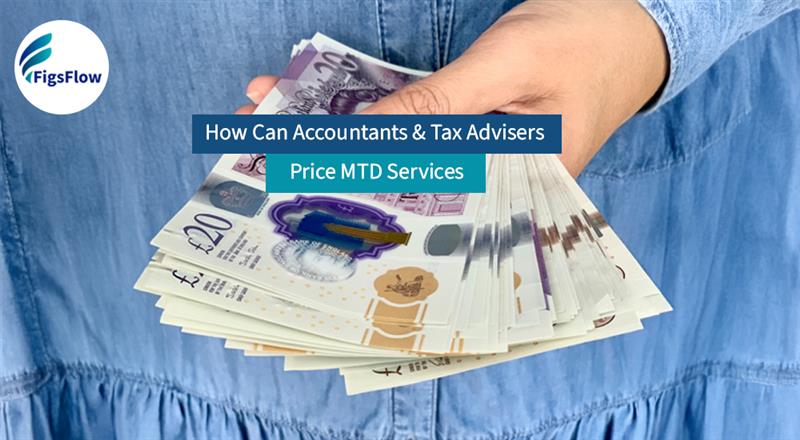The introduction of Making Tax Digital for Income Tax Self-Assessment (MTD ITSA) marks a significant shift in how accountants and tax professionals manage client records and submissions. Individuals and small businesses will need to comply with MTD ITSA regulations, which require quarterly updates and annual declarations to HMRC. This change presents both challenges and opportunities for accountants, particularly when it comes to pricing these new services.
To ensure that MTD ITSA services are priced correctly, accounting firms need to evaluate various factors ranging from the level of service required to the complexity of each client’s needs. In this article, we will explore the key factors to consider when pricing MTD ITSA services, along with practical tips to create a structured pricing model for your clients.
Understanding the Scope of MTD ITSA Services
Before diving into pricing, it’s important to define what services are included in MTD ITSA compliance:
- Quarterly Updates – Clients will need to submit income and expense updates to HMRC every three months.
- Annual Declaration – A final declaration will be required at the end of the tax year, which consolidates the quarterly updates and ensures the information is accurate.
- Digitisation of Records – Clients not currently using digital tools will need assistance transitioning to MTD-compliant software.
- Ongoing Support & Advisory – You may offer additional services such as tax planning, business advice, and financial forecasting to help clients optimise their tax situation.
These components will form the basis of your service offering and help determine each client’s complexity and time commitment. You may find pre-designed MTD ITSA templates helpful when designing engagement letters to showcase what you offer and how you carry out your work.
Key Pricing Factors for MTD ITSA
In the section below, we will discuss some of the pricing factors that need to be considered to determine the price that needs to be charged to the clients.
Client Readiness & System Integration
The current state of the client’s records will heavily influence the pricing. There are typically three types of clients:
- Clients Already Using MTD-Compliant Software – If your clients are already using accounting software that complies with MTD ITSA (e.g., Xero, QuickBooks), the additional cost for them to comply with MTD ITSA will be minimal. Pricing for these clients will primarily cover the administrative tasks associated with submitting quarterly updates and the annual declaration.
- Clients with Paper-Based or Non-Digital Records – For clients still relying on paper records or outdated digital systems, the transition to MTD ITSA will require significant work. You’ll need to help digitise their records, set up MTD-compliant software, and train them on how to maintain accurate digital records. This may involve extra fees for system integration and setup, including:
-
- Transitioning to new software
- Data entry and conversion of paper records
- Client training and ongoing support
- Hybrid Clients (Partially Digital but Non-Compliant) – These clients might already have some digital records, but they may not be compliant with MTD ITSA standards. Additional work will be required to bring their systems up to date, which will add to the cost.
Pro Tip
When evaluating client readiness, it’s essential to assess the volume of data and complexity of the client’s financial situation. For instance, a business with multiple income streams and numerous transactions will require more time to bring their records into compliance than a client with a simple income structure.
Service Level & Frequency
MTD ITSA mandates that updates be submitted quarterly, which may require more frequent communication and work from your accountancy firm. In fact, there is a host of requirements accountants and tax advisers need to follow when providing Making Tax Digital services. Pricing needs to account for:
- Basic Service – This could involve quarterly submission of updates and a simple review of client data.
- Full-Service Accounting – For more complex clients, you may need to offer a full-service package that includes:
-
- Quarterly updates and financial reconciliation
- Preparation of the final annual declaration, which may require adjustments for non-quarterly income (e.g., pension, dividends, interest)
- Preparation of the final annual declaration, which may require adjustments for non-quarterly income (e.g., pension, dividends, interest)
Accountants may also need to consider the frequency of client interaction. If clients need to reach out for assistance frequently, or if you’re offering a more proactive service, this will add to your costs.
Pro Tip
Clients who require higher levels of support (e.g., regular bookkeeping and quarterly consultations) should be priced accordingly. You can offer different tiers of service packages based on how much interaction the client needs.
Volume & Complexity of Client Data
The complexity of a client’s financial situation will influence pricing. Consider factors such as:
- Number of Transactions – A higher volume of transactions or numerous income sources (e.g., rental income, freelance work) will increase the amount of time required for data entry, reconciliation, and quarterly updates.
- Multiple Bank Feeds – More bank feeds to reconcile means more time spent ensuring the accuracy of financial records.
- Taxable Deductions & Additional Income Sources – Clients with complex tax situations (e.g., pensions, dividends, interest, and employment income) will require more time to compile, analyse, and report this information in line with MTD ITSA at the time of final submission.
Pro Tip
Create pricing tiers based on the number of transactions or bank feeds clients have. For example, a flat fee for clients with fewer than 100 transactions per quarter and an additional charge per 50 transactions above that threshold.
Client Segmentation & Customisation
Every client is different, and tailoring pricing to meet the unique needs of each client is crucial. Consider segmenting your clients into different categories, such as:
- Simple Clients – These clients may have straightforward financial records, limited transactions, and minimal support needs. They might only require basic quarterly submissions and annual declarations.
- Complex Clients – Clients with complex financial situations, multiple income sources, or frequent transactions will need a more comprehensive service package, which will justify a higher price.
Pro Tip
Offer customised pricing models for clients based on their specific needs. For example, you could offer a standard package for clients with simple records and a premium package for more complex businesses.
Pricing Models for MTD ITSA
There are several pricing models you can choose (including the famous value-based pricing model) from to price MTD ITSA services:
Fixed-Rate Pricing
A fixed-rate pricing structure provides a clear, predictable cost for clients. You can base this rate on factors such as:
- The service package selected (basic vs full-service)
- The client’s readiness and the complexity of their data
- The number of quarterly updates and the final declaration
Time-Based Pricing
For clients with complex needs, time-based pricing (hourly rates) may be more appropriate. This model is best for clients who require more bespoke services, such as extensive bookkeeping or data conversion.
Subscription or Retainer Model
A subscription-based or retainer model can provide clients with ongoing support and predictability in costs. Clients pay a monthly or quarterly fee that covers all MTD ITSA services, including quarterly updates, bookkeeping, and annual declarations.
Pro Tip
Move clients who are currently paying for annual tax returns to a quarterly or monthly billing model to align with the new MTD ITSA requirements.
Additional Considerations
- Early Bird Discounts – Consider offering discounts for clients who sign up early for MTD ITSA services or for those transitioning to MTD-compliant software.
- Value-Added Services – Use MTD ITSA as an opportunity to offer additional services such as tax planning, financial forecasting, or business consultancy, which can help increase your revenue.
- Ongoing Training – Ensure that your team is continually trained on MTD ITSA requirements, so you can provide the best possible service to clients and stay ahead of HMRC updates.
Conclusion
Pricing MTD ITSA services requires careful consideration of various factors, including client readiness, the complexity of data, the level of service required, and the frequency of updates. By understanding these factors and offering flexible pricing models, accountants and tax professionals can ensure that their services are competitive, profitable, and aligned with the needs of their clients.
Whether you choose to use a fixed-rate, time-based, or subscription pricing model, the key to success is to clearly communicate the value your services provide. Offering a range of packages and customisation options will allow you to serve clients at every level, from those with straightforward financials to those with complex tax situations, all while ensuring compliance with MTD ITSA.
If you’re still unsure how to price your MTD services, use FigsFlow, the proposal, pricing and engagement letter software for accountants, which uses automatic pricing models to give you the optimum prices for your service offerings.


